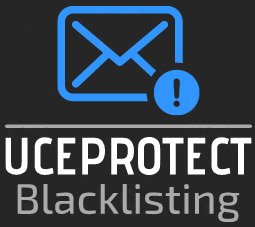Oh, no! You’ve just been hit by the dreaded email block. You know, that annoying situation where you’re trying to send an email, but it bounces back, and you’re left scratching your head. The culprit? UCEPROTECT.
In this guide, we’ll dive into the mysterious world of UCEPROTECT, discover who they are, and learn why your emails might be blocked. Buckle up, as we embark on this adventure together!
[lwptoc colorScheme=”inherit”]
The Email Bouncers: Who is UCEPROTECT?
Before we can understand why your emails are being blocked, we need to know who’s behind the curtain.
UCEPROTECT is a network of email blacklist services designed to identify and block spam, phishing, and other unwanted emails. They’re like the bouncers of the email world, ensuring that only legitimate emails get through the velvet ropes.
The “Why” Behind Blocked Emails
UCEPROTECT and other email blacklisting services block emails for a variety of reasons. Sometimes it’s because you’ve been flagged as a potential spammer, while other times it’s due to a broader issue with your email service provider (ESP).
Here are some common reasons for email blocks:
- Your IP address or domain is listed on a blacklist
- You’re sending a high volume of emails in a short period
- Your email contains suspicious links or attachments
- You have a high bounce rate or low engagement rate
- Your email content triggers spam filters
The Scary World of Email Blacklisting
When your emails are blocked, it’s often because your IP address or domain has been “blacklisted.” That means it’s been added to a list of known spammers or suspicious senders, and email servers are instructed to block or filter emails coming from you.
Blacklists are maintained by different organizations, like UCEPROTECT, Spamhaus, and SURBL. They’re constantly updated to ensure they’re protecting email recipients from the latest threats. It’s like an ever-changing battle between email superheroes and spammers!
How to Get Your Emails Unblocked
If you’ve found yourself on the wrong side of a blacklist, don’t fret! You can take steps to get your emails unblocked and restore your email-sending reputation. Here’s what you need to do:
- Identify the blacklist(s): First, determine which blacklist(s) your IP address or domain is listed on. You can use tools like Blocklist Check, MXToolbox or MultiRBL to check your status.
- Investigate the issue: Figure out why you were blacklisted in the first place. Was it because of spammy content? A compromised email account? Take the time to investigate and address the root cause.
- Request removal: Once you’ve resolved the issue, contact the blacklist provider(s) and request removal from their list. Be sure to explain the steps you’ve taken to fix the problem and demonstrate your commitment to sending legitimate emails. Keep in mind that some blacklists, like UCEPROTECT, may require a waiting period or even a payment to expedite the removal process.
- Monitor your progress: After your removal request, keep an eye on your IP address or domain to ensure it’s been successfully removed from the blacklist(s). You can use the same tools mentioned earlier to track your status.
- Improve your email practices: To prevent future blacklisting, adopt better email practices. This includes using double opt-in for subscribers, regularly cleaning your email list, and creating engaging, valuable content.
Tips to Avoid Email Blocks in the Future
We’ve all heard the saying, “Prevention is better than cure.” So, here are some tips to help you avoid email blocks and blacklisting in the future:
- Authenticate your emails: Set up proper email authentication protocols like SPF, DKIM, and DMARC to prove that your emails are legit.
- Segment your email list: Divide your subscribers into smaller groups based on their interests, engagement, or other criteria. This allows you to send more targeted, relevant emails that are less likely to be flagged as spam.
- Maintain a clean email list: Regularly remove inactive subscribers, bounced email addresses, and anyone who has marked your emails as spam. A clean list means better deliverability and fewer blocks.
- Test your emails: Use tools like Mail-Tester or GlockApps to test your emails for potential issues before hitting the send button. These tools can help identify content that might trigger spam filters.
- Stay up-to-date with email regulations: Be familiar with email regulations like the CAN-SPAM Act, GDPR, and CASL, and ensure your email marketing practices are compliant.
UCEPROTECT: Friend or Foe?
UCEPROTECT may seem like the villain in your email-blocking story, but they’re just doing their job: protecting email users from spam and other unwanted emails.
By understanding how they operate and following best practices, you can avoid email blocks and maintain a healthy sender reputation.
So, is UCEPROTECT a friend or foe? The answer depends on your perspective. For those trying to protect their inboxes, UCEPROTECT is a superhero. But for those who find themselves on the wrong side of a blacklist, UCEPROTECT can feel like a supervillain.
The key is to play by the rules, respect the email ecosystem, and always strive for better email practices. That way, you can keep UCEPROTECT on your side and ensure your emails reach their intended recipients without a hitch.
Conclusion
Now that you’re armed with knowledge about UCEPROTECT and email blacklisting, you can tackle any email blocks that come your way.
Remember, a little bit of prevention goes a long way. So, keep your email list clean, your content engaging, and your emails out of the spam folder. Happy emailing!

